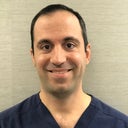For sometime, I have commonly described two categories for lower eyelid surgery (blepharoplasty) when dealing with eyelid bags, which is excess fatty tissue. The categories are fat sparing and fat subtractive. Fat sparing are typically techniques like fat repositioning that takes into account the groove (or tear trough) located underneath the eyelid bag. Fat repositioning simultaneously reduces and smooths out the fullness of the eyelid bag but uses some of the fat to fill in the groove or tear trough. This provides a smoother, more youthful contour from the eyelid to the cheek.Fat subtractive techniques simply remove the fat, but unfortunately the correct amount of fat to remove or subtract is often difficult to predict even with the most experienced surgeon's hands Thus, it is common that too little is taken out, so the bag persists, or more commonly too much is taken out leaving a hollowed, aged appearance to the eyes.The best approach for the fat repositioning procedure is through an inside incision, called transconjunctival. It is a more advanced approach for the fat repositioning technique but spares cutting through your eyelid muscle, which can create issues.The attached link provides more information.I hope this helps.





